In a nutshell, website accessibility means that all users, regardless of disability, can access website technology. By breaking down barriers and providing new opportunities for all web users, everyone wins. People with disabilities, as well as government agencies and private businesses, benefit from a world where website content is accessible by everyone. fjorge has a general mission to make the internet a better place for everyone, so here are answers to five common questions related to website accessibility compliance.
What is website accessibility compliance?
Essentially, it's all about making sure that people with disabilities can use the web just as effectively as anyone else. Website accessibility compliance is covered by two popular standards: Section 508 of the Rehabilitation Act and Title III of the Americans with Disabilities Act (ADA). Both acts are made up of laws and guidelines requiring information to be made available to all members of the public, regardless of sensory disabilities. Section 508 requires accommodations for those seeking access to Government Information and Communications Technology (ICT), while ADA requires businesses, state and local government agencies, and non-profit organizations to make accommodations for the disabled public to ensure access to the same services as patrons who are not disabled.
Starting in 2018, Section 508 standards become incorporated into Federal procurement regulations (United States Department of Justice).
Who needs to comply?
In short, everyone needs to comply. Websites that do not comply are subject to litigation. According to Seyfarth Shaw LLP, 61 website accessibility related lawsuits were filed across 5 states in 2015.
Why is website accessibility compliance important?
There are obvious legal reasons to comply with Section 508 and ADA. Most website accessibility related lawsuits result in a remediation of websites, and this doesn't only happen to large corporations. Any business or group that serves the public can be asked to remediate their website if Section 508 or ADA standards are violated. Of course, the primary reason behind accessible website development is the enabling of those who have visual impairments, are hard of hearing, or who have mobility or cognitive challenges to enjoy, access, and otherwise participate in the modern digital world we live in.
How do you become website accessible compliant?
Organizations are encouraged to use the WCAG 2.0 level AA guidelines as a guide on how to become website accessible. These 12 guidelines center on making websites perceivable, operable, understandable, and robust:
1.1: Provide text alternatives for any non-text content so that it can be changed into other forms people need, such as large print, braille, speech, symbols or simpler language.
1.2: Provide alternatives for time-based media.
1.3: Create content that can be presented in different ways (for example simpler layout) without losing information or structure.
1.4: Make it easier for users to see and hear content including separating foreground from background.
2.1: Make all functionality available from a keyboard.
2.2: Provide users enough time to read and use content.
2.3: Do not design content in a way that is known to cause seizures.
2.4: Provide ways to help users navigate, find content, and determine where they are.
3.1: Make text content readable and understandable.
3.2: Make web pages appear and operate in predictable ways.
3.3: Help users avoid and correct mistakes.
Check out the specific guidelines and testable success criteria here (WCAG 2.0).
Are there simple ways to make my website more accessible?
Perhaps the number one issue websites have with meeting guidelines for an accessible website is not providing alternative text for images. This, along with upcoming Section 508 updates and fjorge's mission to make the internet a better place for everyone, is why we created AccessibilityPress. This WordPress plugin evaluates each page of your website and produces a page-by-page report of which images are missing alt text, allowing you to save time and money on the path to website accessibility.
AccessibilityPress is focused on building products that help websites achieve high accessibility standards, including: Section 508 compliance and WCAG 2.0 A, AA or AAA level of conformance.








